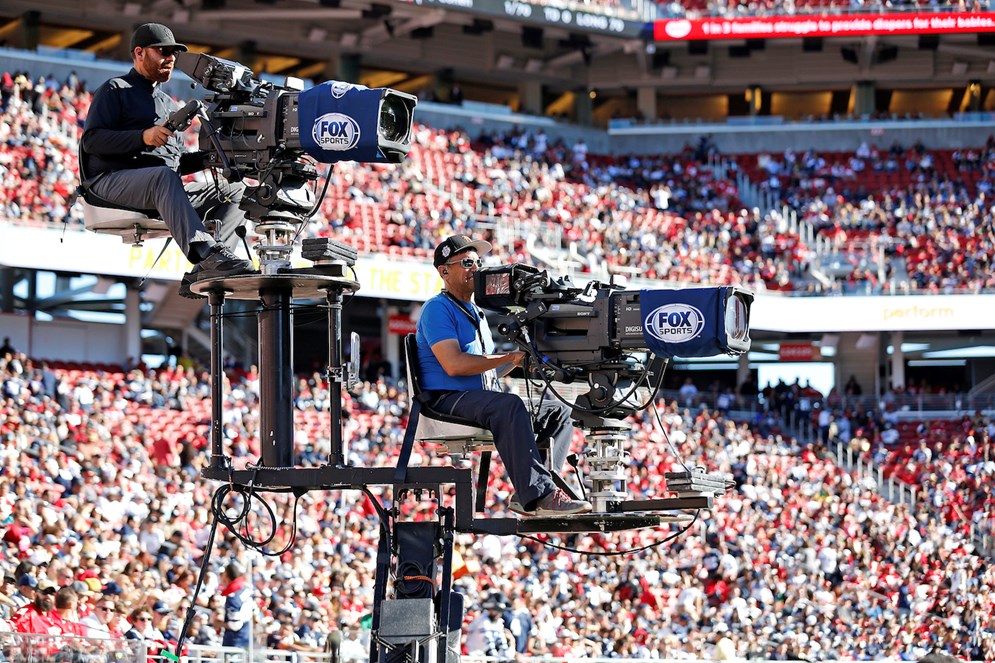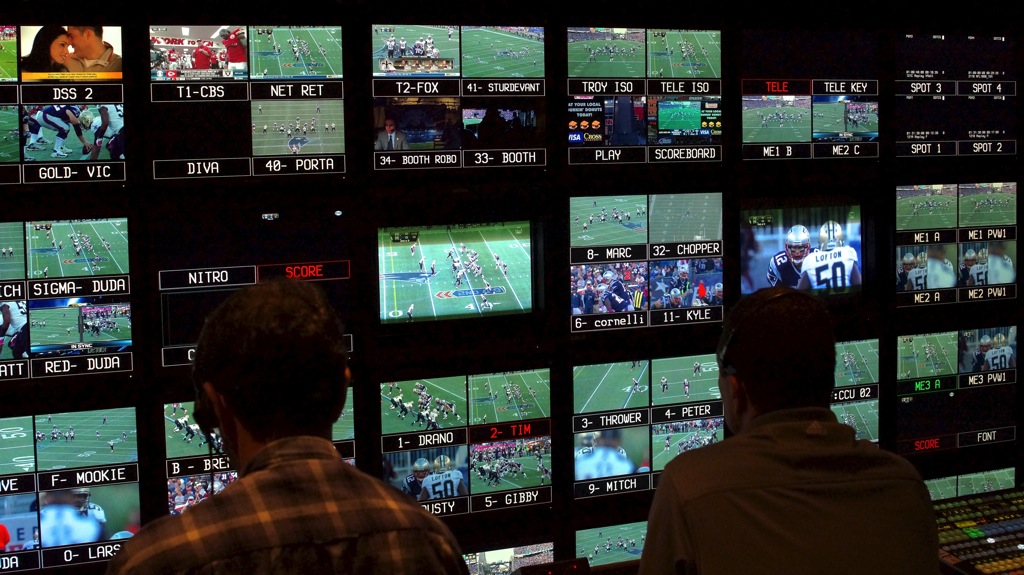When “Sorry, I left the lens cap on” just won’t do.
Filming the Super Bowl and managing your own top talent culture.
Complacency doesn’t just affect employee cultures that are less than competent; it breeds in employee cultures that are extremely competent. Such cultures know they’re the best. They are confident of success, enjoy the regular autonomy they have earned, and are entitled to all the material rewards they receive.
If you manage a culture where there is no learning curve or multiple levels of expertise–people already have to be extraordinarily competent to even do the job–how then do you keep them committed and increase that commitment?
This is a problem I addressed as one chapter in my book Under the Hood: Fire Up and Fine Tune Your Employee Culture. In that chapter I also profiled four examples of organizations that required exclusively top talent as a baseline requirement. One of them is the film crew for the Super Bowl. Here’s the exclusive interview with Super Bowl broadcast director Mike Arnold.

THE NUMBERS THAT MATTER
“Camera 10, back up with the throw. Camera 22, stay with the man in motion. Camera 8, you’ve got this guy, follow him. Camera 15, I need you on coach reaction.”
“I’m talking nonstop for three hours,” says Emmy Award–winner Mike Arnold, lead game director for the NFL on CBS and the director of the Super Bowl. During those three hours, other numbers are talking too: Over 108 million viewers, justifying ad costs of $4 million for 30 seconds and igniting Internet gambling of over $93 million.
Mike Arnold isn’t paying attention to any of those numbers. He is focused on 50. That’s the number of television screens in the eighteen-wheel semi-trailer parked outside the stadium. Inside the trailer, Mike is watching those screens intensely, directing editors, graphics, tape teams, and the camera teams on the field, all of whom are tracking the game as fast as it happens. He is making split-second coverage calls about which picture is going out on the air, live, to 180 countries.
Live. One hundred and eight million people. One hundred and eighty countries. Zero margin for error. This kind of make-it-or-break-it pressure would cause many managers to scream at their people—or to run shrieking for the hills. Not this guy: He’s got the standing heart rate of an iguana.
A BUNCH OF SUPERSTARS WHO NEVER GET THE BALL
A lot of his equanimity has to do with the quality of the team. The rest of it has to do with what little getting upset would accomplish. “They’re all professionals,” he tells me. “I use my own core team of twenty-five, and I cherry-pick the best of the rest. Everyone has been working football all year, so they intuitively understand the rhythm of the game. It’s an honor to work the Super Bowl, and everyone knows it. Everybody wants to do their best.”
“But even superstars need pumping up,” I say. “That’s true,” he agrees, “but I don’t do a lot of rah-rah before the game. I do tell them, ‘Hey, you never know what will be the moment that everybody remembers from this Super Bowl. You could be the cameraman who has that or the tape guy who has the replay. If people remember it, they’re going to remember it for a long time.’ Then counter the pressure by reminding them that once the kickoff happens, it’s the same eleven players on eleven players, and they’ve all done this before.
“The game is going to be the game,” he says. “We can only anticipate so much, and that’s what makes it so exciting to watch. Sure, we can miss a key shot, but to get on my guys for it won’t help and may not be fair. Remember, it’s the quarterback’s job to fake everyone out. I stay positive and supportive. If my guy misses a play, I’m not happy about it, and I may yell instructions, but I’m not yelling at my guy. What’s the point of reprimanding someone in the middle of the action? I need them to focus on the game.”
“Since a percentage of your employee culture is new, how do you rehearse?” I ask. “We don’t just show up on Sunday to cover the game,” he responds. “We watch a lot of films, visit the teams, and hold camera meetings. And then a week before, we bring a high school team into the actual stadium and have them run plays we think are going to happen in the big game, so we can block out camera angles.” “A high school team?” I ask. “Of course, NFL players are a lot faster,” Mike adds. Well . . . yeah.

THE GAME IS ON, THE LIGHTS ARE OFF
“One of the things we do drill for is if someone runs onto the field,” he offers. “Then we have a combustible situation that may be entertaining to some but might also be dangerous.” One of the things that Mike and his team never drilled for is what would happen if someone ran onto the field but they couldn’t tell because nobody could even see the field: the midgame loss of power in Super Bowl 2013.
“That was just surreal,” he says. “Our cameras are shooting up in the lights and suddenly they lose the lights. Hey, what happened? When the lights went, we lost all of that power that went to the lights, which goes to a lot of our cameras, so we lost a bunch of cameras. We lost communications with our announcers in the booth, so they couldn’t hear us. We were just flying blind, but we didn’t panic. It was a fast team response: How do we get the cameras back? How do we fill the air with whatever we can?”
I venture that filming the Super Bowl must be akin to a tightrope walker who wisely doesn’t look down until it’s over. “This is just what we do,” he says, all iguanish. “You know what I’m amazed at? When you go to a restaurant with eight people and your waiter takes an order and doesn’t write anything down. Then he brings it out, and it’s right. How do they do that?”
Excerpted from Under the Hood: Fire Up and Fine-Tune Your Culture by Stan Slap. © 2015 Penguin/Random House, New York
Join the SLAP List
Signing up is free.
Getting off is gonna cost you.

